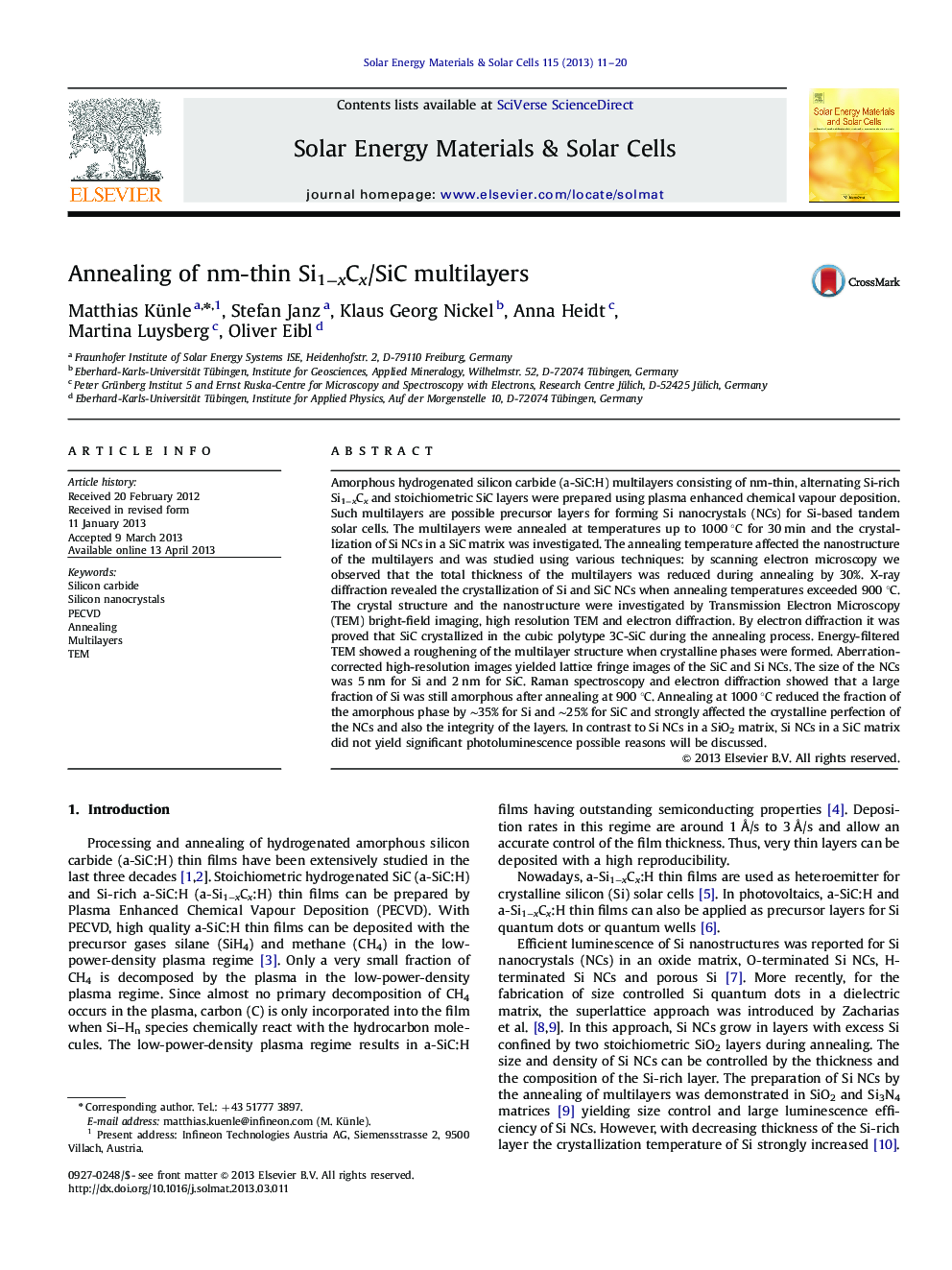| Article ID | Journal | Published Year | Pages | File Type |
|---|---|---|---|---|
| 78226 | Solar Energy Materials and Solar Cells | 2013 | 10 Pages |
•Si1−xCx/SiC mulitlayers were prepared by PECVD and subsequently annealed.•Si and SiC crystals formed after annealing at 900 °C. SiC crystallized in the cubic polytype 3C-SiC.•The nanocrystal size was 5 nm for Si and 2 nm for SiC after annealing at 900 °C.•Annealing at 1000 °C affected the perfection of the nanocrystals and the layer integrity.•Si nanocrystals in SiC did not yield significant photoluminescence.
Amorphous hydrogenated silicon carbide (a-SiC:H) multilayers consisting of nm-thin, alternating Si-rich Si1−xCx and stoichiometric SiC layers were prepared using plasma enhanced chemical vapour deposition. Such multilayers are possible precursor layers for forming Si nanocrystals (NCs) for Si-based tandem solar cells. The multilayers were annealed at temperatures up to 1000 °C for 30 min and the crystallization of Si NCs in a SiC matrix was investigated. The annealing temperature affected the nanostructure of the multilayers and was studied using various techniques: by scanning electron microscopy we observed that the total thickness of the multilayers was reduced during annealing by 30%. X-ray diffraction revealed the crystallization of Si and SiC NCs when annealing temperatures exceeded 900 °C. The crystal structure and the nanostructure were investigated by Transmission Electron Microscopy (TEM) bright-field imaging, high resolution TEM and electron diffraction. By electron diffraction it was proved that SiC crystallized in the cubic polytype 3C-SiC during the annealing process. Energy-filtered TEM showed a roughening of the multilayer structure when crystalline phases were formed. Aberration-corrected high-resolution images yielded lattice fringe images of the SiC and Si NCs. The size of the NCs was 5 nm for Si and 2 nm for SiC. Raman spectroscopy and electron diffraction showed that a large fraction of Si was still amorphous after annealing at 900 °C. Annealing at 1000 °C reduced the fraction of the amorphous phase by ∼35% for Si and ∼25% for SiC and strongly affected the crystalline perfection of the NCs and also the integrity of the layers. In contrast to Si NCs in a SiO2 matrix, Si NCs in a SiC matrix did not yield significant photoluminescence possible reasons will be discussed.
